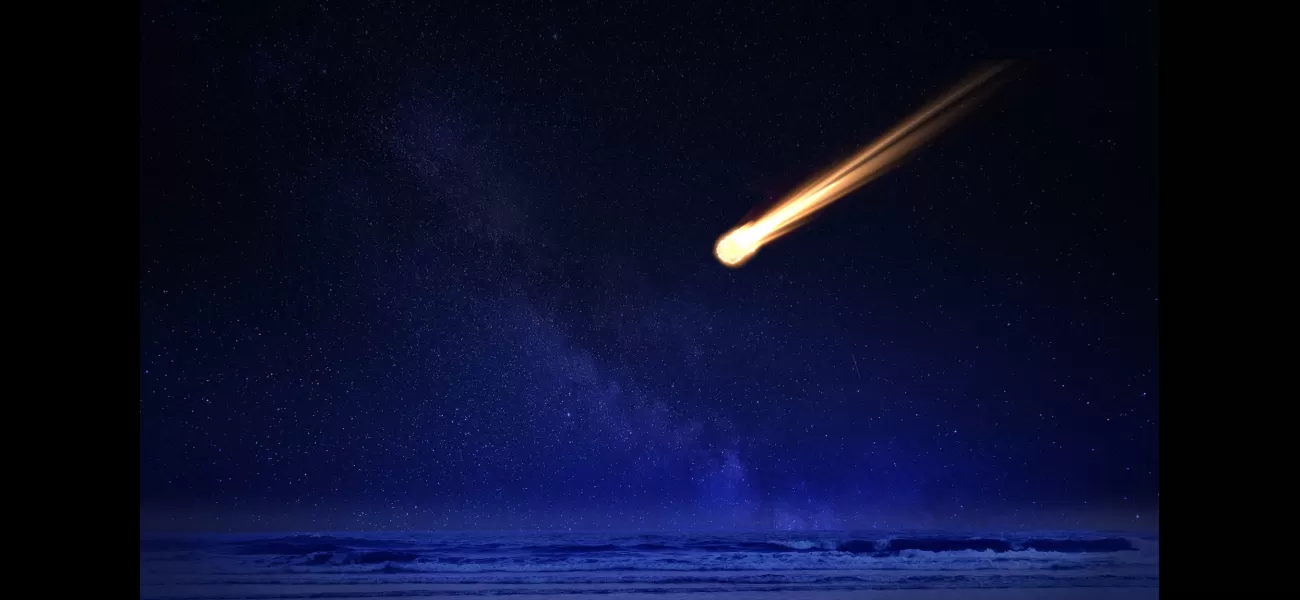We thought weird radio waves were from extraterrestrial object, but they were something else.
March 8th 2024.

The year was 2014, and a meteorite had caused quite a stir among scientists and alien enthusiasts alike. It all started in January when a blazing meteor made its way through the atmosphere and into the Pacific Ocean. But before it could make its grand entrance into the sea, a nearby seismometer in Papua New Guinea picked up some strange sound waves.
Many wondered, could this be a sign of extraterrestrial life? A desperate call for help, perhaps? Unfortunately, for those hoping for a close encounter with aliens, the answer was no. As it turns out, the mysterious sound waves were actually coming from a truck passing by on a nearby road.
Dr. Benjamin Fernando, a planetary seismologist from Johns Hopkins University who led the research, explained, "The signal changed directions over time, perfectly coinciding with the path of a road near the seismometer. It's quite challenging to determine the source of a signal, but what we can do is analyze the characteristics and see if it aligns with what we would expect from a meteor or a truck."
The seismometer in question was located near a road, which led the team to question the validity of previous claims about the meteorite's crash site. It also cast doubt on the materials collected from the suspected crash site, which had been studied by Harvard professor Dr. Avi Loeb. His findings suggested that the meteorite, named IM1, was of extraterrestrial origin and could even be remnants of advanced alien technology.
Dr. Loeb's argument was based on the unusual combination of three elements found in the tiny spherules (magnetic marbles) collected from the site: beryllium, lanthanum, and uranium, also known as BeLaU. However, the Johns Hopkins team now argues that the new seismic data suggests the meteor may have landed over 100 miles away from where the spherules were found.
To locate the actual crash site, the team used data from stations in Australia and Palau, which were designed to detect sound waves from nuclear testing. Their findings, which will be presented at a conference in Houston, indicate that the meteorite landed in a different location than previously thought.
However, Dr. Loeb has raised concerns about the new findings, arguing that other sources, including data from the Department of Defense, were used to determine the meteorite's location. In his blog, he wrote, "The authors have disregarded the Department of Defense's data and have concluded that the location of IM1 is unknown within a much larger area. It's difficult to convince those who choose to ignore reliable information."
Despite the disagreements about the crash site, the Johns Hopkins team has concluded that the materials studied so far are nothing more than ordinary meteorite particles mixed with terrestrial materials. Dr. Fernando added, "Regardless of whether it was a natural space rock or a piece of alien spacecraft – we highly doubt the latter – whatever was found at the bottom of the ocean has no relation to this meteor."
It seems the excitement surrounding the 2014 meteorite has died down, and the search for extraterrestrial life continues. But who knows, maybe one day we'll be lucky enough to receive a real signal from outer space. Until then, we can only speculate and hope for the best.
Many wondered, could this be a sign of extraterrestrial life? A desperate call for help, perhaps? Unfortunately, for those hoping for a close encounter with aliens, the answer was no. As it turns out, the mysterious sound waves were actually coming from a truck passing by on a nearby road.
Dr. Benjamin Fernando, a planetary seismologist from Johns Hopkins University who led the research, explained, "The signal changed directions over time, perfectly coinciding with the path of a road near the seismometer. It's quite challenging to determine the source of a signal, but what we can do is analyze the characteristics and see if it aligns with what we would expect from a meteor or a truck."
The seismometer in question was located near a road, which led the team to question the validity of previous claims about the meteorite's crash site. It also cast doubt on the materials collected from the suspected crash site, which had been studied by Harvard professor Dr. Avi Loeb. His findings suggested that the meteorite, named IM1, was of extraterrestrial origin and could even be remnants of advanced alien technology.
Dr. Loeb's argument was based on the unusual combination of three elements found in the tiny spherules (magnetic marbles) collected from the site: beryllium, lanthanum, and uranium, also known as BeLaU. However, the Johns Hopkins team now argues that the new seismic data suggests the meteor may have landed over 100 miles away from where the spherules were found.
To locate the actual crash site, the team used data from stations in Australia and Palau, which were designed to detect sound waves from nuclear testing. Their findings, which will be presented at a conference in Houston, indicate that the meteorite landed in a different location than previously thought.
However, Dr. Loeb has raised concerns about the new findings, arguing that other sources, including data from the Department of Defense, were used to determine the meteorite's location. In his blog, he wrote, "The authors have disregarded the Department of Defense's data and have concluded that the location of IM1 is unknown within a much larger area. It's difficult to convince those who choose to ignore reliable information."
Despite the disagreements about the crash site, the Johns Hopkins team has concluded that the materials studied so far are nothing more than ordinary meteorite particles mixed with terrestrial materials. Dr. Fernando added, "Regardless of whether it was a natural space rock or a piece of alien spacecraft – we highly doubt the latter – whatever was found at the bottom of the ocean has no relation to this meteor."
It seems the excitement surrounding the 2014 meteorite has died down, and the search for extraterrestrial life continues. But who knows, maybe one day we'll be lucky enough to receive a real signal from outer space. Until then, we can only speculate and hope for the best.
[This article has been trending online recently and has been generated with AI. Your feed is customized.]
[Generative AI is experimental.]
0
0
Submit Comment





